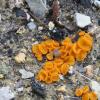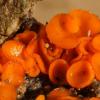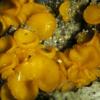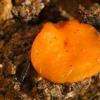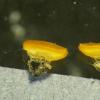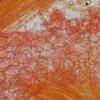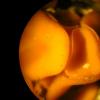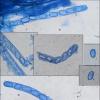
31-12-2025 19:27
Collected from loamy soil, at waterside (completel

30-12-2025 16:44
Pascal DucosBonjour,Une anamorphe rose stipitée, très nombre

30-12-2025 17:14
 Bernard CLESSE
Bernard CLESSE
Bonjour à toutes et tous,Pourriez-vous aider Albe

29-12-2025 10:15
Hulda Caroline HolteHello, I found and collected this propoloid ascom

30-12-2025 09:04
Hello.A Pyrenomycete sprouting sparsely but very d

29-12-2025 17:44
Isabelle CharissouBonjour,J'aimerais savoir si d'autres personnes au

12-11-2021 00:03
Lepista ZacariasHi everybody,A week ago in my fiels trip I noticed
 I am trying to identify a Cheilymenia sp. using keys by J. Moravec (1984) found on burnt ground and plant debris (and there was also some dead reamians of fowl)
I am trying to identify a Cheilymenia sp. using keys by J. Moravec (1984) found on burnt ground and plant debris (and there was also some dead reamians of fowl)My first problem is if the spores are striated or not, and in some images stained in cotton blue, I can make vague striations but they can be shadows not striations. I am assuming that they are fine striations and hence attribute the species to Sect. Striatisporae (which include some species that grow on plant debris). The hairless apothecia would lead to be Sect. Coproba and easily keyed to C. granulata, but this is a dung species and excluded for that reason.
Further info:
Excipulum (medullary): Spherical to broadly elliptical usually with obtuse angles forming an isohedral, 30-48 µm wide
Hairs on rim: A few present, scattered, quite inconspicuous and hyaline
Hairs length: (150–)200–400(–450)µm
Hairs morphology Hyaline, straight, sometimes with a swollen tip (or swollen just below the apex) 1- or 2- septate (depending length of hair) with a bulbous basal hypha, ovoid and asymmetric and with a septum just above the base and sometimes a second septum located about the proximal third of the hair length.
Ascum average size 215.3 µm x 12.3 µm
Iodine reaction J -ve
Spore average size 15.2 µm x 8.7 µm
Spore Q factor 1.71
I am inclined over C. theleboloides s.l. likely f. glabra for being almost hairless and which grows on wide range of habitats (and the text says easily confuses with granulata mentioned above !)




